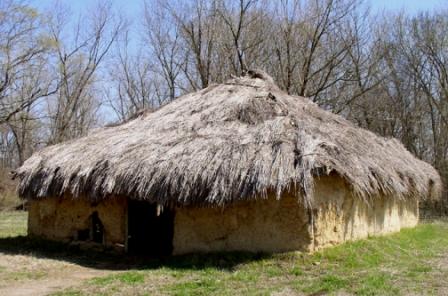|
How to Make Nephite Cement by W. Vincent Coon, MS
I took
some limestone from the Onondaga escarpment near the
Clarendon-Linden fault in western The Native American name "Onondaga" is strikingly like the name "Onandagus" (variously spelled). This name was revealed by the Prophet Joseph Smith to the brethren of Zion's Camp. (See the various "Zelph" accounts, .e.g. Times and Seasons, January 1, 1846, pg. 1076)
The
Onondaga escarpment “…the more part of it is one solid mass…broken up…found
in seams and in cracks, and in broken fragments…both above the earth and
beneath” (Helaman 14:21-22)
Onondaga
limestone and reeds
I
pulverized the limestone to powder and heated it to incandescence,
converting some of the limestone (calcium carbonate) to calcium oxide.
Ancient North Americans capable of smelting copper, could have produced
temperatures hot enough to make moisture resistant lime plaster. Burnt
lime "plaister" was known
to the Israelites of old. (Leviticus 14:42,
Isaiah 33:12) Hebrew scripture,
in fact, may have inspired Nephite "cement".
I then
made a "wattle and daub" type structure of reeds cemented with clay.
I mixed
the cooked powdered limestone with water (it warmed exothermically as I
mixed in the water). I applied the moist paste to the exterior of the
reed and clay model. When dry, the cooked lime plaster formed a moisture
resistant coating on the exterior of the model shelter.
"Wattle
and daub" type structures are known to have been made by many ancient peoples around the
world, particularly in areas where timber was scarce. Such was the condition
described in
Helaman 3:5-7.
A 19th
Century definition of "cement" is "any substance applied in a soft or
glutinous state to the surfaces of solid bodies to make them cohere firmly".
(
Model
"wattle and daub" structure with moisture resistant coating
The
mound builders of
In there
eagerness to point out Mesoamerican equivalents of "cement", some LDS
apologists seem to forget the stone box which contained the plates. This stone box was
imbedded in a
A Native
American "cement" house of a type made by the mound builders of
So what
became of all the plastered houses made by ancient Israelites in their
promised lands? Subject to the extremes of a temperate climate, not to
mention the destructive activities of men, these types
of dwellings simply do not last through the centuries! You would have to
really know what you're looking for to find the slightest remnant of one.
You might search for some surviving trace of a regular pattern in the
ground - the remains of postholes and pieces of what might appear to be only
limestone or clay but on closer inspection might reveal traces of
fiber of some kind in them.
There
are a lot of things mentioned in the Bible that do not appear to be
present in the Land of Israel. For instance: what became of all the
gold and silver articles that were so common in the days of King
Solomon?
(1 Kings 10:16-29)
Scripture answers this question!
Professor Hugh
Nibley stated:
"In view
of the nature of their civilization one should not be puzzled if the Nephites had left us no ruins at all. People underestimate the capacity of
things to disappear, and do not realize that the ancients almost never built
of stone. Many a great civilization which has left a notable mark in history
and literature has left behind not a single recognizable trace of itself. We
must stop looking for the wrong things." (An Approach to the Book of Mormon,
pg. 431)
"A closer approximation to the Book of Mormon picture of Nephite culture is seen in the [mound builder] earth and palisade structures of the Hopewell and Adena culture areas than in the later stately piles of stone in Mesoamerica…" (The Prophetic Book of Mormon', pp.272-273)
Scripture before impressive ruins - lest we be guilty of Promised Land
identity theft! |
|
